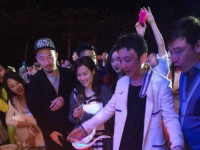View钩子
来源:互联网 发布:公司网络营销策划书 编辑:程序博客网 时间:2024/06/04 17:52
1.父组件调用子组件的方法
(1)子组件的控制器
export class TreeChildComponent implements OnInit { constructor() { } ngOnInit() { } greeting(name:string){ console.log('hello'+name) }}(2)父组件调用
A.模板
<app-tree-child #child1></app-tree-child>B控制器调用子组件方法
import { Component, ViewChild, OnInit } from '@angular/core';import { StockInfo } from './search-stock/search-stock.component';import { TreeChildComponent } from './tree-child/tree-child.component';@Component({ selector: 'app-root', templateUrl: './app.component.html', styleUrls: ['./app.component.css']})export class AppComponent implements OnInit { //声明一个变量child1,通过@ViewChild()装饰器获得对子组件的引用 @ViewChild("child1") child1:TreeChildComponent; constructor(){ } ngOnInit(): void { this.child1.greeting('tom'); }}C.父组件模板直接调用子组件方法<app-tree-child #child2></app-tree-child><button (click)="child2.greeting('jerry')">调用child2的greeting方法</button>2.AfterViewInit,AfterViewChecked
(1)在父组件上实现 AfterViewInit,AfterViewChecked接口,组件模板所有内容组装完成以后,已经给用户看了以后,这两个钩子才被调用
ngAfterViewChecked(): void { console.log("父组件的视图变更检测完成"); } ngAfterViewInit(): void { console.log("父组件的视图初始化完成"); }(2)同样,在子组件中也实现这两个钩子
ngAfterViewChecked(): void { console.log("子组件的视图变更检测完成"); } ngAfterViewInit(): void { console.log("字组件的视图初始化完成"); }(3)父组件中调用子组件方法
ngOnInit(): void { setInterval(()=>{ this.child1.greeting('tom'); },5000) }注意:
(1)组件有子组件,只有子组件的视图组装完毕以后,父组件的这两个方法才会被调用
(2)如果要在这两个方法中改变某个值,要写在一个timeout里面,否则会抛出异常
阅读全文
0 0
- View钩子
- 钩子
- 钩子
- 钩子
- 钩子
- 钩子
- 钩子
- 钩子
- 钩子
- 钩子
- 钩子
- 钩子
- 钩子
- 钩子
- 钩子
- 钩子,全局钩子
- 钩子啊钩子
- 鼠标钩子 键盘钩子
- 《汇编语言》(第三版)王爽第十章 课程设计1 个人方法记录
- 12章
- 设计模式—装饰器模式
- 图论2
- 使用MyBatis对项目中的统计功能进行处理的查询语句优化
- View钩子
- Proe5 .0wildfire免安装版去掉进入时的安装弹框脚本错误提示
- 智能指针
- 笔试题1
- laravel框架集成PHPExcel讲解及demo
- spring框架的定时器应用
- Can't create table #sql-2e4_14.frm' (errno: 150)--创建外键时发生的错误
- CentOS 7 创建eclipse快捷方式
- Add Two Numbers


